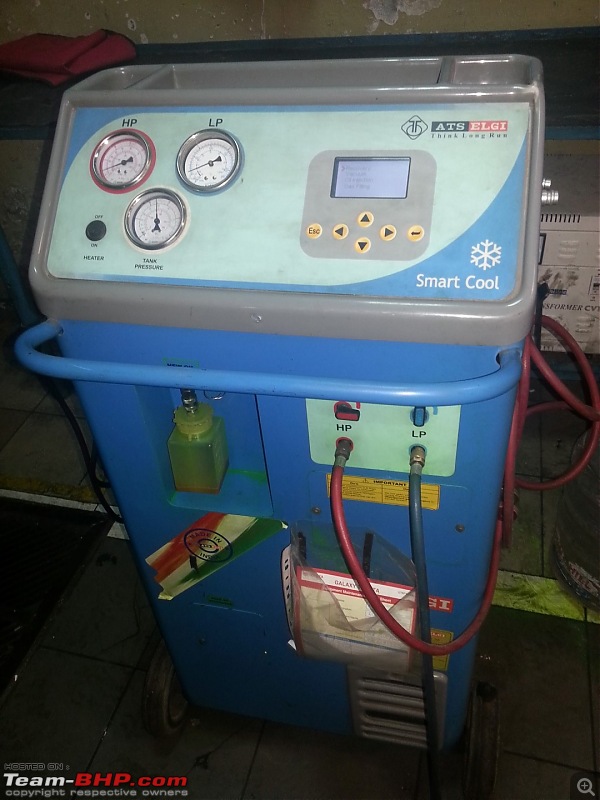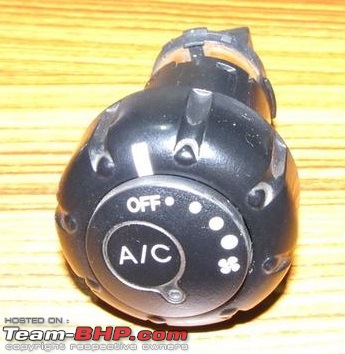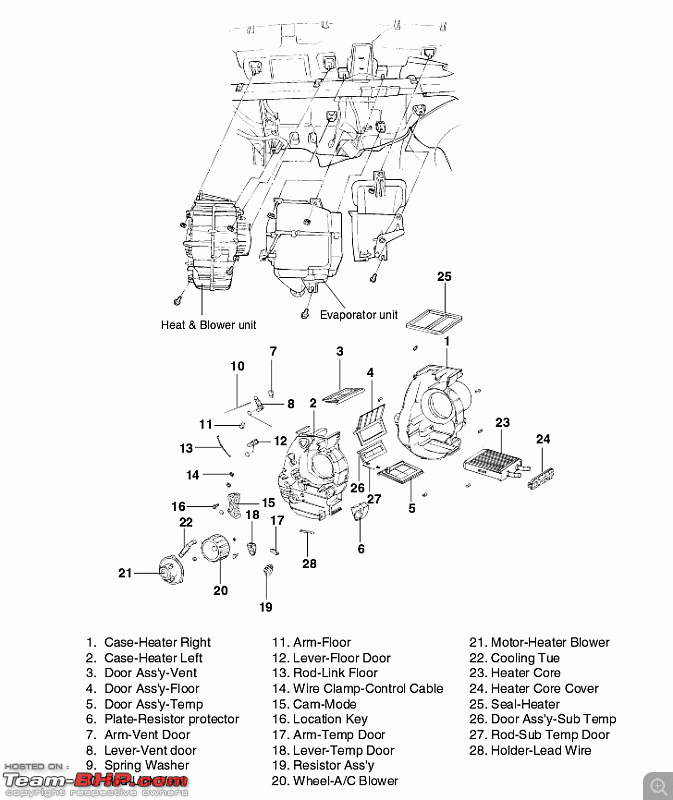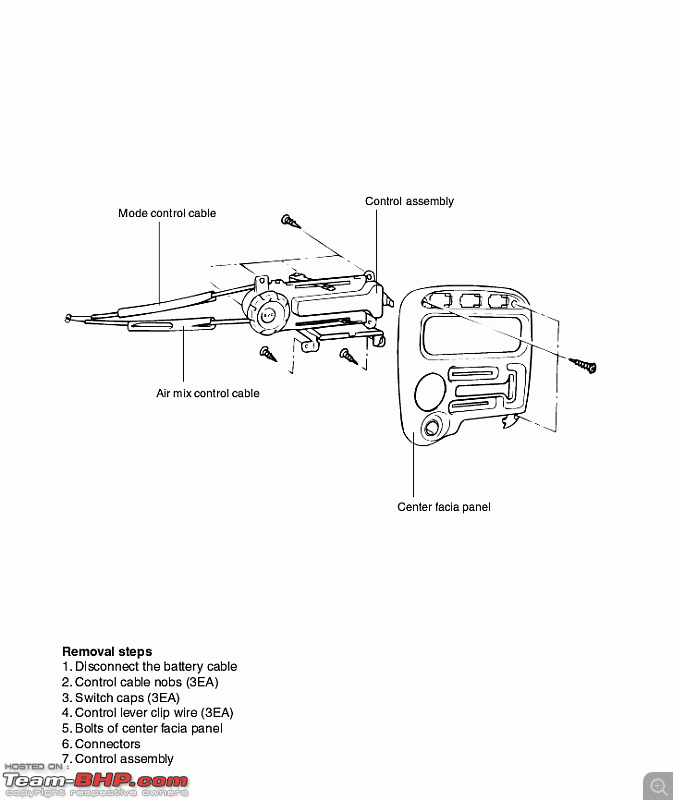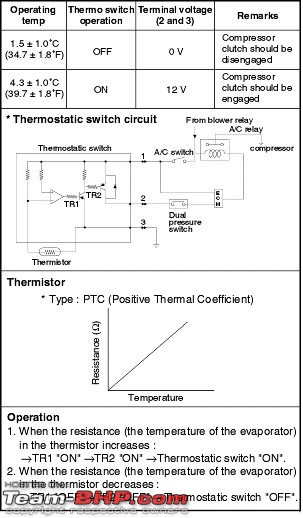Quote:
Originally Posted by SS-Traveller  Nice article there, Joy, with lots of obvious homework done in connivance with Google! |
Thanks for all the positive comments SST. I don't necessarily view Google as a bad thing... I am sure you would agree that you too would not like a world bereft of a good search engine.

Having said that, it's up to the person, how he wishes to use the information. If you find there is something factually incorrect do let me know. Do provide me what needs to be the correction.
Quote:
Originally Posted by joybhowmik  The most common cause of AC failure is leakage of the refrigerant through cracks, pinholes or other leak points. |
and your repartee...
Quote:
|
Not really. The most common complaint in car AC systems is loss of cooling, which is equally commonly traced to a choked cooling coil under the dashboard - something like this...
|
Now Webster
defines failure as :
Quote:
|
1b) : a situation or occurrence in which something does not work as it should
|
The word failure used in my post referred to a complete loss of
desired functionality.
My view is the word complaint as used by you does not necessarily
imply a failure.
That said, I agree - a choked cooling coil will cause delayed cooling- yes and one may conceivably argue - that's not desired functionality either.
But it will not result in AC failure - as in, the AC will still work, one will eventually get to the desired temperature but one has to sweat for 10 minutes more (in a manner of speaking).
That said, I agree the chief cause of customer complaint is a choked cooling coil.
And that is why I have recommended that it may be appropriate to have the AC serviced once every 2 years or 24K km
Quote:
|
Opening up and flushing a closed loop factory-sealed system every 2 years as a preventive measure? Not for me, thanks.
|
A very
surprising comment. Surely that was in jest?
Do consider the rather dusty conditions in some parts of the country, including where we both live. I am sure you have experienced this given your car has been through most of the country by now - that the cabin filter (if there is one) , and evaporator (cooling coil) pick up dust on their surface from inside the cabin.
How does it get there?
From our footwear, then on to the mat, and then pulled in by the suction in the footwell. The condenser is next to the radiator, and usually facing outside. One can well imagine the amount of dust/grime that gets on the surface after a while.
Now in an AC service, one of the most important jobs the mechanic does is - take out the condenser and evaporator and give it a thorough exterior wash. Washing off the grime and dirt that has accumulated on the condenser , is probably a good thing for the next few hundred km, but it does drastically improve the cooling efficiency of the evaporator for several thousand km (
unless of course one persists in walking in and out of the car with muddy shoes on).
They can't very well do that without first draining the system of refrigerant. In case of roadside mechanics - they drain by just letting the refrigerant escape out into the air. In company A.S.S. workshops , (where there is a fear of environmental watch dogs), they recover the refrigerant in a slightly more civilized way, and recycle it. Then they create a vaccuum, before recharging the system. They will flush the lines on request , because sometimes, especially with a
tired receiver/drier, small quantities of
fluoric / hydrochloric acid forms as a result of retained moisture combining with the r134 (or variant) in the closed loop system, which in turn causes some corrosion in the lines - and effectively leads to a build-up of obstructive material.
Quote:
|
Whose side are you on, anyway?
|
Again, its up to personal preference. One can pay for a complete service costing between 1.5 K to 6K (prices not valid for expensive supercars or bmw's or their genre

) once every 2 years.
Or one can do nothing but just sell the car after 5 years, and wash the problem off one's hands. To each his poison.
Quote:
|
You didn't add cost as a reason.
|
Thanks. Yes cost is another reason. I wish someone in the moderator team can add this point to the main post. I unfortunately am unable. The UV test involves specialized equipment - primarily some injectable dye and a special UV light to shine on the plumbing. And that is not something you will find at the roadside mechanic. But you may find it at the A.S.S.
In fact, in Toyota's A.S.S. they have it. But one has to ask for the test to be performed as part of service, if one suspects a leak (no refrigerant left).
Quote:
|
Replace what? The whole plumbing?
|
I have shown a picture of expected spots where leaks can occur.
If it is the condenser or evaporator - and rust has caused leak points, one can get away with a refurbishment. Typically A.S.S. will not do this - they will only replace. That's why, if one has a leaking condenser (perforated coil), or an evaporator, take it to the roadside mechanic , who will get it brazed at a specialist shop.
If on the other hand , it's a hose, or a joint, or a seal - get it replaced. Just for peace of mind. I am quite sure there's no returns in exchanging pennies now for a failure later.
Quote:
|
Any comment about what kind of compressor has what advantage / disadvantage?
|
Fixed displacement, Swash plate compressors offer higher durability.smaller size , lower weight, lower NVH, higher efficiency
Variable displacement compressors provide the ability to give varying compression at different speeds, thus controlling the degree of refrigeration. This has the added benefit of improving clutch life.
Screw/Scroll compressors (types of rotary compressors) offer lower NVH, high efficiency, low maintenance.
Quote:
|
Which automobile makers use what type of compressor?
|
Many automakers today prefer the swash plate type of compressor- e.g. Honda, Toyota. But others, e.g. Ford have not taken sides one way or another.
Quote:
|
And how (if at all) are car AC compressors different from home AC compressors?
|
Different applications. And different drives. Two points.
1) To put it simply, a car AC compressor's only power input is the rotation of the pulley, whose speed depends on engine rpm (a variable factor). Hence,the way to control the degree of refrigeration , has taken on increasing complexity. Now we have variable displacement compressors, swash plate compressors et al. These have evolved due to the different needs and expectations from an auto compressor:
e.g. low nvh, high efficiency, higher performance, less weight, small size , more durability, less maintenance requirement etc.
This kind of complexity is not needed in homes, where the primary energy input is a hopefully constant voltage. Which means , that a thermostat is all that is required to maintain temperature. Also, there's usually no one bothered about weight of the compressor in a home application , or its size.
2) The other big difference is the space required to be cooled. Home spaces are much larger, requiring much larger displacement in the compressor to keep up with the heat energy entering the room. In cars the enclosed space is much smaller. Further, the larger the compressor in the car the lesser the fuel economy, and the more the weight. So, in auto applications, reaching the right temperature quickly is important, but equally in many countries, it's equally important to be frugal. So heavy duty large displacement auto compressors that consume a lot of energy , have fallen out of favour.
Quote:
|
I'm appalled, Joy. All this homework, and then you tell our readers not to use this thread to get answers to their cars' AC issues? In which case the thread title of My Car A/C is not working. What to do? is entirely misleading!
|
I had meant this to be more of an article rather than a thread. A kind of reference if you will. So it's important that tidbits of usable information make their way into this thread.
Not for more questions, and untested answers. There are enough threads meeting that requirement, and I thought it might help if this thread is relatively clean, which would make it easier to find information in it.
 (5)
Thanks
(5)
Thanks
 (1)
Thanks
(1)
Thanks
 (1)
Thanks
(1)
Thanks
 (4)
Thanks
(4)
Thanks
 (1)
Thanks
(1)
Thanks
 (2)
Thanks
(2)
Thanks
 (2)
Thanks
(2)
Thanks
 (2)
Thanks
(2)
Thanks






 ) once every 2 years.
) once every 2 years. 
